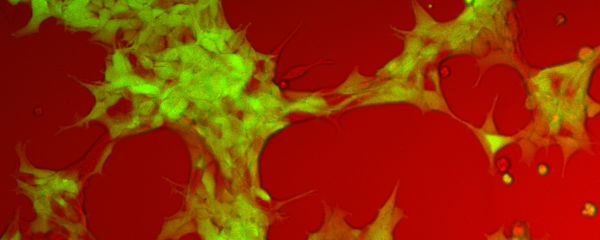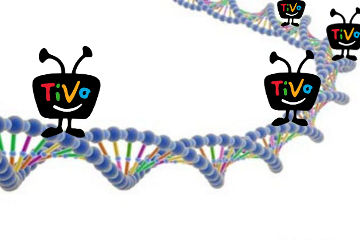What I’ve Learned:
“Splice junctions: snipping ads out of your favorite programs since many millions of years ago.”
Your DNA is crap.
Well, mostly it’s crap. But so is mine, and so is everyone else’s. For all the wondrous and amazing things our genetic code can accomplish, most of the really good stuff comes from a tiny little fraction of the genome. The rest is poorly understood, variable in quality and dubious in value.
In other words, your DNA is like cable TV.
Think of it this way: imagine all of your genetic material — three billion DNA base pairs tucked into every one of your cells, and responsible for making you “you” and not me or a goldfish or a head of iceberg lettuce — laid out in a line, like a TV program schedule. The “shows” are the genes — twenty to thirty thousand snippets of code that actually mean something. These can be read to produce proteins, which do just about all of the important work in your body, from grabbing the oxygen you breathe to growing toenails to helping you decide how much of that Buffy the Vampire Slayer marathon to sit through.
(All of it. Duh.)
But what’s between those shows you like, in the great abyss of “five hundred channels and nothing on”? Well, a couple of things. First, there are “pseudogenes” — stretches of DNA that look like they might do something interesting, but which have been mutated and mangled past the point of being useful. These are your knockoff shows and half-assed sequels: Who Wants to Be a Thousandaire?. Seinfarb. Home Alone 9: The Alonening. No good can come from these, clearly.
There are other bits of fluff, too. Near-endless repeats — possibly important in DNA for structure; used in TV as an excuse for USA to cram another NCIS rerun on the schedule. And long, droning stretches of apparently random sequence — the overnight informercials of the human genome.
But back to the genes. These are structured like TV shows in another important way: our genes contain commercials. In the genome, these are called “introns”, and are bits of DNA in between the important parts (which are called “exons”). When the gene is finally translated into a protein, these bits are snipped out in a process called splicing. And the edges of each intron in the line contain a short code called a splice junction, which tells the translation machinery where to snip the nonsense out.
So if a gene is like a television show, then a spliced gene is like watching with TiVo. Which is clearly better, because you can skip the commercials. And it’s made possible at the genetic level by splice junctions.
These splice junctions are tiny two-base sequences — usually GU (in RNA-speak) on one end, and AG on the other — that mark the intron they surround for snipping. But it’s not always a simple matter of lopping out the “commercials”. Many of our genes undergo a process called alternative splicing, where chunks containing multiple introns (and the exons between them) can be yanked out, producing multiple proteins from the same gene — sometimes with very different functions.
Think of alternative splicing as watching through the setup of, say, your favorite cop drama, then skipping to the end when they catch the perp. All that stuff in the middle is just filler and dusting for fingerprints, right? Much better.
So the next time your body translates a gene into a protein — which is all the time, obviously — give a little thanks to the splicing, and splice junctions, that make it possible, by editing out the crap in your cable lineup of a genome.
And then get back to that Buffython. Season 5 isn’t gonna watch itself, sunshine.



